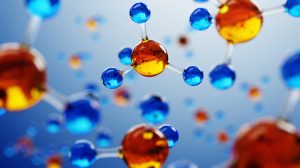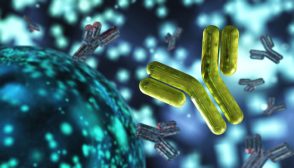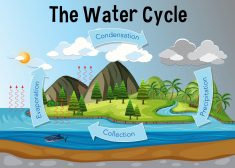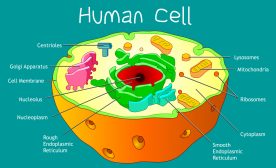Table of Contents
Definition
noun
plural: cytidines
cy·ti·dine, ˈsaɪtɪdiːn
A pyrimidine nucleoside that has cytosine attached to the pentose sugar ribose
Details
Overview
A nucleoside is a nucleobase with a five-carbon sugar (either ribose or deoxyribose). It is a glycoside formed from the hydrolysis of nucleic acid. A pyrimidine nucleoside is one in which the nucleobase is a pyrimidine, such as cytosine in cytidine. Cytidine is a nucleoside consisting of cytosine and ribose sugar linked by β-N1-glycosidic bond. When a phosphate group is covalently attached to the sugar, it forms a nucleotide. An example of a nucleotide wherein three phosphate groups are attached to cytidine is cytidine triphosphate (CTP), one of the building blocks of RNA synthesis.
Characteristics
Cytidine is found in all living organisms as a structural component of RNA. The chemical formula is C9H13N3O5. Its molar mass is 243.217 g/mol. Chemically, it is a white, crystalline powder that dissolves readily in water whereas slightly soluble in ethanol.
Cytidine vs. Deoxycytidine
Nucleosides may be classified into ribonucleosides or deoxyribonucleosides, depending on the sugar component. Cytidine is a ribonucleoside due to its ribose sugar. In contrast, deoxycytidine is a deoxyribonucleoside for having a sugar component that is deoxyribose. Deoxycytidine differs from cytidine by having a hydroxyl group replaced by hydrogen at the 2′ position of the sugar moiety.
Common biological reactions
Common biological reactions
Nucleosides such as cytidine can be produced by de novo synthesis pathways in the liver. Nevertheless, they may also be obtained from the diet. When the diet contains nucleotides, the body digests them by nucleotidases to produce nucleosides and phosphates. Nucleosides are degraded into their subcomponents (i.e. nucleobases and sugar) by the action of nucleosidases in the lumen of the digestive tract. Some of the main dietary sources of cytidine are RNA-enriched foods such as organ meats.
Biological functions
Cytidine, just as the other nucleosides, can give rise to nucleotides. When phosphorylated by kinases, the nucleoside is converted into a nucleotide. Thus, a nucleotide is a nucleoside with a phosphate group. Cytidine can form cytidine monophosphate (CMP, i.e. cytidine with a single phosphate group), cytidine diphosphate (CDP, i.e. cytidine with two phosphate groups), and cytidine triphosphate (CTP, i.e. cytidine with three phosphate groups). CTP, in particular, is one of the building blocks for the formation of RNA. Apart from nucleic acid synthesis, cytidine appears to control neuronal-glial glutamate cycling, with supplementation decreasing midfrontal/cerebral glutamate/glutamine levels.1 CTP, in particular, is a coenzyme in metabolic reactions, e.g. in the formation of glycerophospholipids and in the glycosylation of proteins.
Medical importance
KP-1461, a cytidine analogue belonging to the class of nucleoside reverse transcriptase inhibitors, has a potential use as a treatment for HIV/AIDS. Another cytidine analogue is zebularine. It is a transition state analog inhibitor of cytidine deaminase. It is being investigated for its effectivity in chemotherapy.
Supplementary
IUPAC
- 4-amino-1-(2R,3R,4S,5R)-3, 4-dihydroxy-5-(hydroxymethyl)oxolan-2-ylpyrimidin-2-one
Chemical formula
Synonym(s)
- Cytosine riboside
- Cytosine beta-D-riboside
Derived terms
Further reading
See also
- nucleoside
- deoxycytidine
Reference
- Machado-Vieira, R., Salvadore, G., DiazGranados, N., Ibrahim, L., Latov, D., Wheeler-Castillo, C., Baumann, F., Henter, I.D., & Zarate, C. A. (2010). “New Therapeutic Targets for Mood Disorders”. The Scientific World Journal, 10: 713–726. doi:10.1100/tsw.2010.65.
© Biology Online. Content provided and moderated by Biology Online Editors







